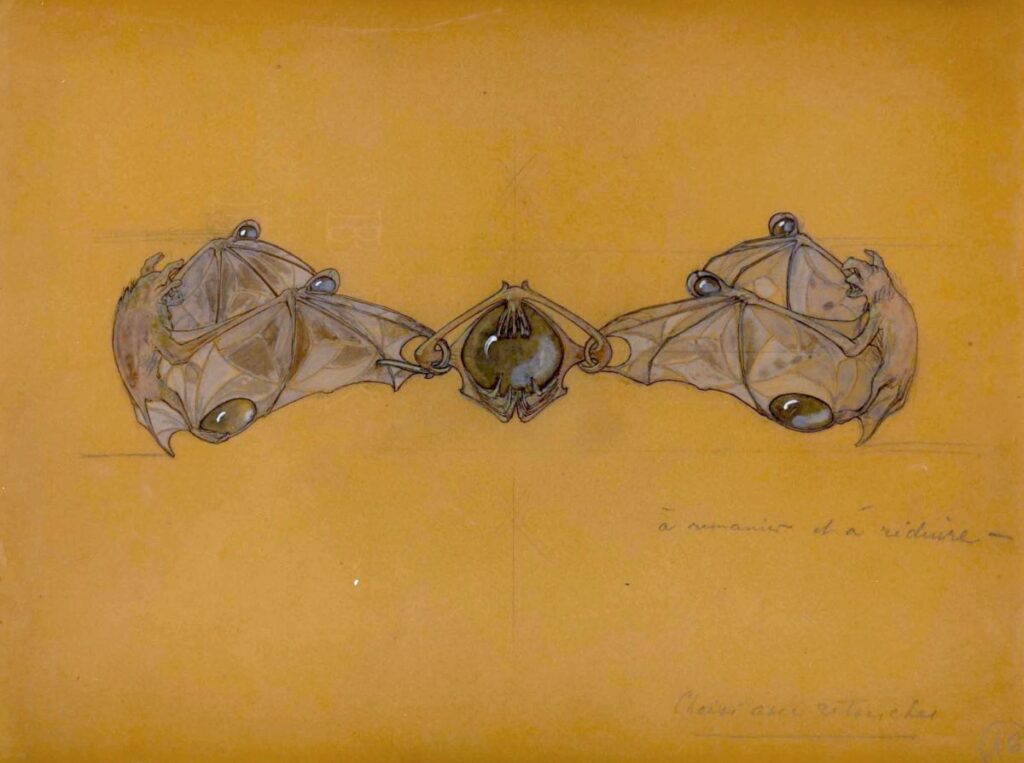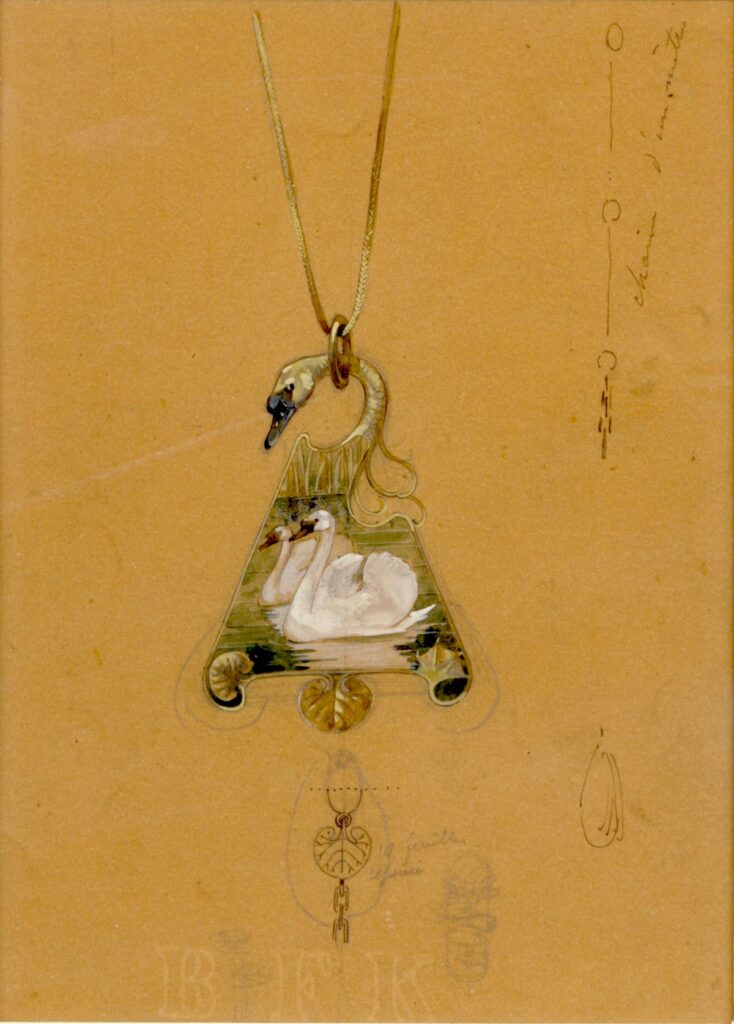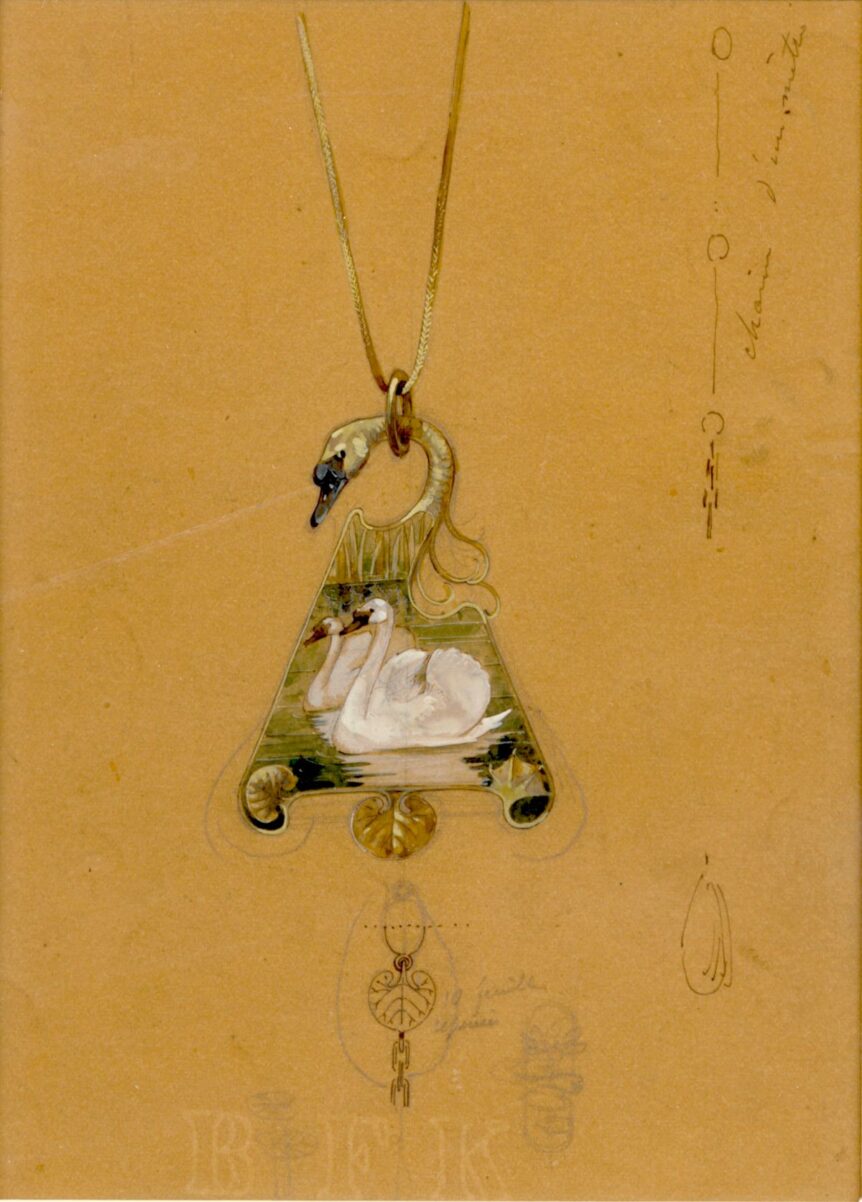
Drawings are the cradle of creativity. Through drawings, artists and designers sort out the schemes that become fully realized works of art, and as such offer scholars their best view into the artistic process. A current exhibition of drawings at the New York antiques gallery A La Vieille Russie offers rare insight into the genius of the ever-intriguing French designer René Lalique and his early jewelry designs. The lush, full-color sketches make up the largest collection of Lalique drawings outside of France.
The artist produced preliminary design drawings to scale, using pencil or ink and embellished with watercolor or gouache, hoping that the brilliant colors would come alive in the eyes of his patrons and ignite their desire to hold the actual piece in their hands. As part of the exhibition A La Vieille Russie has paired the illustrations with a selection of Lalique jewels.

From the two-dimensional representations, it is possible to re-read some of Lalique’s most curious works. One of the drawings is an early depiction of Lalique’s “Pendentif Cygnes” swan necklace, which may have belonged to Queen Alexandra of Great Britain. The enamel pendant depicts two swans gliding on a lake. The entire pendant is in the shape of a swan and hangs delicately from the bird’s arched neck. Lalique produced many further variations on this pendant, as swans fell among his most returned-to subject matter. Lalique expert Nick Dawes, who gave a talk on Lalique’s life as part of the exhibition, notes that Lalique observed the swans on his country estate outside Paris and used his own photographs as references in pieces like this.
Swans are not the only creatures to make an appearance in Lalique’s work. Insects—moths, beetles, and the like—were reinterpreted by artists of the art nouveau movement such as Lalique. Art nouveau was strongly influenced by Japanese aesthetics, which—as seen in the ukiyo-e woodblock prints exhibited widely in Europe in the latter nineteenth century—discerned charms in even the creepiest denizens of the natural world. “These creatures are not considered beautiful in the Western tradition,” Dawes says. “But [Lalique] didn’t discriminate.” One Lalique drawing, for example, depicts a clasp in the shape of flying bats. The exhibition also includes a Lalique necklace with pendants depicting stylized wasps.
While Lalique is best known today for his works in glass, Dawes reminds us that the artist “did not start making glass commercially until he was about fifty.” These jewelry illustrations thus represent the beginnings of a multidimensional career. It is a “feast for the eyes,” comments Dawes. A La Vieille Russie’s Lalique drawings exhibition honors the alluring motifs that lifted the artist to fame in his first days as an independent jeweler in Belle Époque Paris.
René Lalique Drawings • A La Vieille Russie, New York • through March 29 • alvr.com

